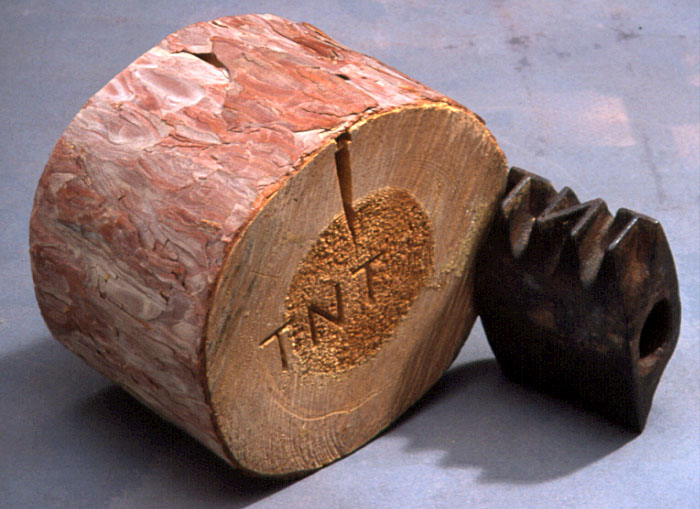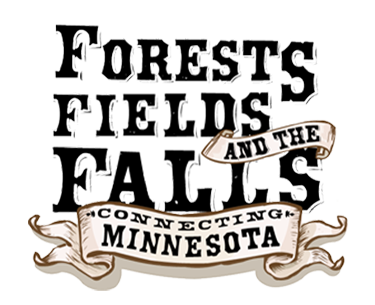How Did They Know Whose Logs Were Whose?

"TNT" log stamp registered by the Johnson-Wentworth Co. of Cloquet, MN on November 10, 1919.
Minnesota Historical Society Museum Collections, Log stamp: 8174.58; Log Section: 1978.38.19
By the time the logs reached the mills, they were mixed up with logs from many different lumber camps. Since the mills paid each camp for the number of logs it received from them, it was important that the mills were able to count a camp's logs.
After a log was cut and stacked, a stamper would whack it on the ends with a special iron mallet. The mallet had a pattern that left a mark on the log; each sawmill owned different marks—sort of like the brands used by ranchers.
As the logs floated down the Mississippi to the mills in Minneapolis, other people read the marks and sorted them into "booms" that fed the different mills.

